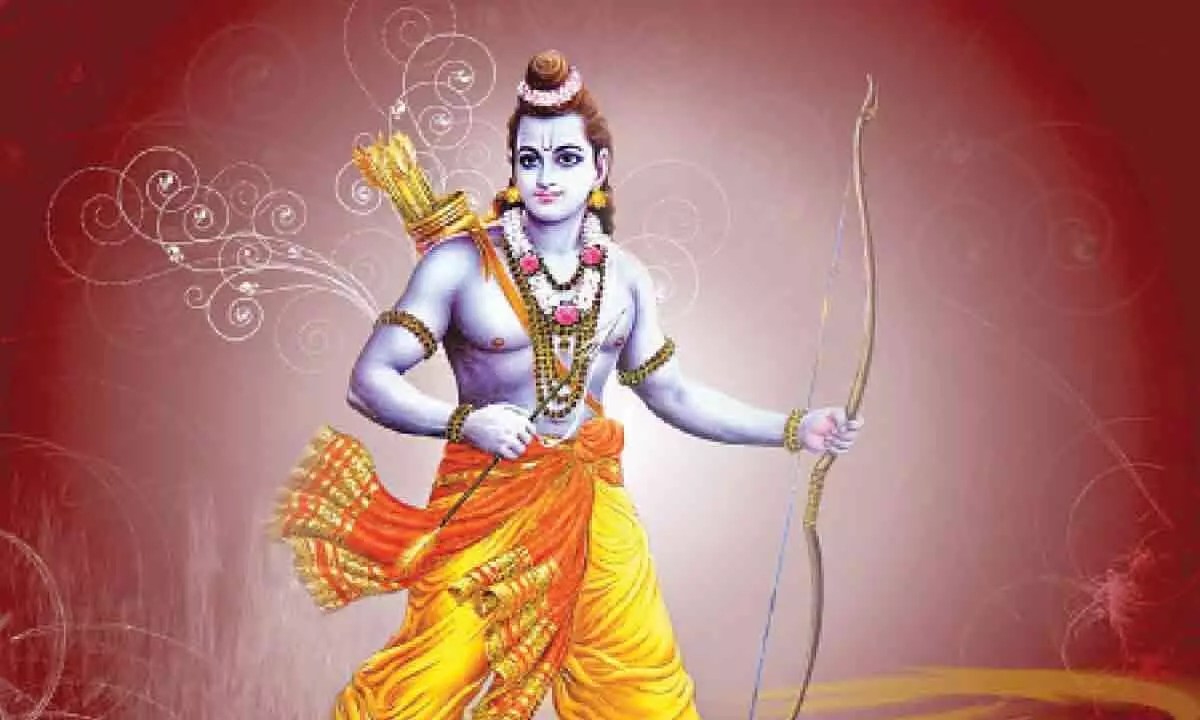Live
- I’m my own competitor in poll arena, asserts Kasani
- Outsiders in CMO attempting to take over State says Dharmendra Pradhan
- Kurnool: Felicitation centers being set up to use Postal ballot
- Bhubaneswar: Aparajita, Manmath supporters raise slogans
- Traffic Restrictions Imposed in East Godavari District Ahead of PM Modi's Visit on May 6
- Bhubaneswar: EC orders Sujata’s transfer over misuse of public office
- BRS nominates candidate for Graduates constituency
- Modi govt works only for few chosen industrialists: Madhu Yashki Goud
- RaGa fought against Vedanta to save Odisha’s bauxite reserves: Bhatti
- No power cuts even in peak summer: Dy CM
Just In

There is a line in the Chanakya Niti which says, ‘an idol is for the dull-witted persons; but for the wise, the presence of God is everywhere’. Rama is both an idol and an ideal for the nation. His idol is local, but his ideal is universal
There is a line in the Chanakya Niti which says, ‘an idol is for the dull-witted persons; but for the wise, the presence of God is everywhere’. Rama is both an idol and an ideal for the nation. His idol is local, but his ideal is universal.
Civilizational wars are an unfortunate reality in human history. Almost all ancient civilizations were wiped out but perhaps the Indian civilization is the only longest living civilization on earth. We are fortunate that India has a great civilizational strength.
The whole nation is in euphoria because of the temple for Rama. The civilizational wounds were no doubt felt in the heart of India when an unfortunate incident happened in history, but the spirit of Rama never left our hearts. Lakhs of scholars all over the land continued teaching Ramayana in their own languages. Scores of singers like Tyagaraja or Ramadasa composed great devotional music in all languages. Mothers sang lullabies invoking the virtues of Rama into their children. Folk songs reverberated even in the tribal villages. All these kept the spirit of Rama alive despite the destruction of the temple. The new temple will surely assuage the wound caused five hundred years ago. For many, this is an occasion for celebration, but we must go beyond celebration and reflect further. It need not be a proud or victorious moment, but a happy moment.
We have no idea as to when the original temple at Ayodhya was built but we have the greatest intellectual temple, Ramayana, composed by Valmiki. It is a text which portrays Rama, a personification of dharma. He was the ideal for all levels of people to correct their behaviour. He was a historical person revered as a manifestation of God. Hanuman describes to Sita the physical features of Rama, as a mark of identifying himself as a messenger from Rama. The psychological picture is given by Valmiki in several places, especially in the beginning of the second book of Ramayana (Ayodhya Kanda) when king Dasaratha contemplates making Rama the crown prince. The first two chapters of the second book describe the human being at its best.
Why did Rama decide to go to the forest, just the hour before his installation as crown prince? Many think that he was obeying his father’s order. His father, while marrying Kaikeyi, had promised her that her son would be the king. If he fails to do so, he would be incurring sin for telling a lie and thus go to hell. On the other hand, the dharma was that the eldest son had to be the crown prince. If he does not do it, that was also a sin. Thus, there was a clash between truth and dharma. Kaikeyi argues that dharma, without truth (satya-vacanam) , was meaningless. It was she who tells the ethical dilemma of his father, and asks Rama to go to the forest, to keep up the word of Dasaratha. Rama sees his father in total despair, pleading to Kaikeyi to take back her claim. Dasaratha asks Rama to disobey the word and become the king, but Rama does not do so.
Those were the days in which satya-vacanam (telling the truth and keeping up a word) was a great human value. Rama solves the dilemma of Dasaratha by renouncing his claim to kingdom and volunteers to go to forests. An ideal son who does not want his father to incur sin.
Much later, when a similar dilemma arises, Rama does not ask Sita to enter the fire to prove her virtue. It was Sita who did it voluntarily. She realises her duty as a queen. We saw this in one of these columns earlier. Ramayana is full of such delicate situations. If it was an avatar, it was not merely to kill demons, but it was to present a great role model for right action for all times.
(The writer is a formerDGP, Andhra Pradesh)

© 2024 Hyderabad Media House Limited/The Hans India. All rights reserved. Powered by hocalwire.com







